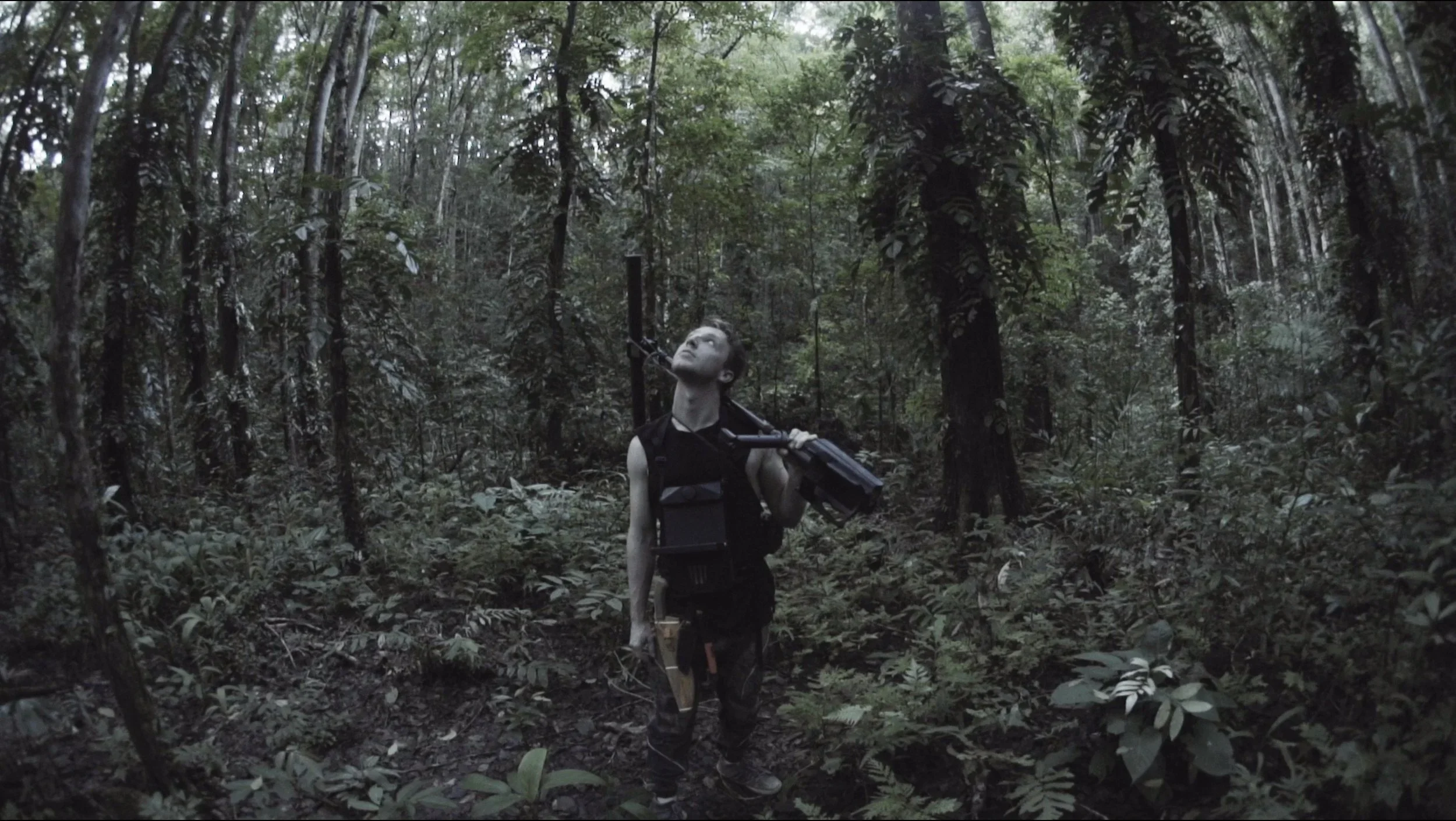'Anino sa Likod ng Buwan' REVIEW: Tragedy in the Valley
‘Anino Sa Likod Ng Buwan’ REVIEW: Tragedy In The Valley
Emma threatening to shoot Joel. Still courtesy of Anino Sa Likod Ng Buwan’s IMDb page.
Mild spoilers for Anino Sa Likod Ng Buwan ahead.
Jun Robles Lana’s Anino Sa Likod Ng Buwan, which first premiered at the QCinema International Film Festival in 2015, will be seen by a fresh set of eyes at the IdeaFirst Company’s EnlighTEN Film Festival on April 13, 2024. These eyes only heard of its reputation from those who witnessed it eight years ago and in online discussions among cinephile circles. They proclaimed it as one of the most unique and best films to come out of the festival that year, if not, the best in the festival’s entire history—they were not lying.
The dialogue-heavy, one-take film, Anino Sa Likod Ng Buwan, is a marvel of calculated narrative and technical claustrophobia that will leave you gasping for breath with each frame and grab you by the neck with its unexpected twists and turns.
From left to right: Emma (LJ Reyes), Nardo (Anthony Falcon), and Joel (Luis Alandy). Still courtesy of Anino Sa Likod Ng Buwan’s IMDb page.Nardo and Joel in a conversation. Still courtesy of Anino Sa Likod Ng Buwan’s IMDb page.
Set on a hot night at a dilapidated hut somewhere in Marag Valley amidst the chaos of an armed Communist insurgency against government forces, the feature follows three “friends”: husband and wife, Emma (LJ Reyes) and Nardo (Anthony Falcon), and their soldier friend named Joel (Luis Alandy). Though a bit gloomy, it all more or less starts out light with a friendly game of pusoy dos and a bit of harmless banter between the three characters.
But it doesn’t take long before the hostilities start to rise, and though it is amusing to think that Nardo’s usage of a fart joke as a euphemism for a bombing run heats up the tension to an immediate boil, it would ignore the fact that the strains are already there even before we set our eyes into the characters. The “camaraderie” is between oppressed refugees and their oppressor, after all.
Once the entirety of the suppressed feelings of Emma and Nardo—both internal refugees trapped inside the valley—towards the injustices and misfortunes that they have endured under the military rule start to bubble to the surface, and with Joel—a staunch chauvinist whose lustful desire for sleeping with married women is only outmatched by the hard-on he gets from committing war crimes and upholding fascistic values—serving as the sole target of their indignant sentiments, the three are set on an unavoidable collision course that can only end in tragedy.
And so, the cramped hut that provides the three with reprieve from the sporadic firing of machine guns piercing the quietudes of the night becomes a cage that traps them, setting the stage for a deceitful, 2-hour psychological cat-and-mouse game that will slowly peel off the facade hiding their own shadows.
Nardo and Joel in a conversation. Still courtesy of Anino Sa Likod Ng Buwan’s IMDb page.
Anino Sa Likod Ng Buwan is essentially a movie about being trapped, and Jun Robles Lana’s decision to box the aspect ratio in 4:3 heightens the feeling of being caged as it makes for a much more intimate, and at times, even voyeuristic, look into the lives of Emma, Nardo, and Joel. Unconventionally structured and executed in a way that a one-act stage play would unfold, it gives you no space to breathe and forces you to witness everything that is happening in real time, which is quite an ingenious way of presentation considering what the characters are trying to do—give the performance of a lifetime playing someone they are not, like actors in a theater play.
Both men, Anthony Falcon, with his masterful transition from a laid-back, goofball husband to a squirrely wreck, and Luis Alandy, who seems to become more menacing as he slowly sheds the sheep’s skin keeping the bloodthirsty wolf at bay, conduct themselves with a bravura that is certainly noteworthy. However, it is LJ Reyes’ portrayal of the complexities and confusions of Emma that stands out among the trio—a feat made even more impressive by the fact that she is present for almost the entire 120-minute runtime.
A review from eight years ago criticized LJ Reyes’ Emma as the weakest link among the characters for being inconsistent with her desires. But isn’t that the point of her character? Hell, isn’t that the point of the entire film? Did we not hear the characters lament how the armed conflict has completely warped their minds and muddled their morals? How their heart is starting to betray their minds? But I don’t need to conjure up a rebuttal to that because the film already provides one.
It is important to show the inconsistencies because it is a part of her that she struggles with. It is the conflict that Emma—who effectuates unrewarded selfless acts for the benefit of others, trapping herself between two cocks and a hard place—has to vanquish in order to break free from the oppressive encirclement she finds herself in. And she does rise above the hypocrisies, objectification, and the self-deception that she created for herself. By the end, in a film full of defeat, she is the only one who has received some semblance of victory, finally winning with her mind and heart intact.
LJ Reyes as Emma. Screenshot from the Anino Sa Likod Ng Buwan trailer on YouTube.
What I find most tragic about the film is its visual aesthetics. Shot in low definition, low light, and coated with a texture emulating an old VHS tape, it looks as if it is a worn-down record that someone has repeatedly played until it degraded the quality of the video. Perhaps Lana is trying to convey that this is a record of our history, a hazy memory perhaps, one that we continuously witness but choose to ignore and forget. This idea would seem far-fetched if not for the fact that, as of writing this review, the armed forces are bombing yet another province up north.
Marag Valley is now a tourist attraction. The horrors have already been whitewashed by the victors, but the memories live on and are preserved by Lana in this little indie gem that he has assembled. Anino Sa Likod Ng Buwan is an unforgettable film, one that can only become more tragic with each passing year. While we all move forward into the future; Emma, Nardo, and Joel will still be trapped in that tumbledown hut, battered by the howling wind resembling the haunting of ghosts and surrounded by the pitch-black darkness threatening to engulf them.
Jun Robles Lana’s Anino Sa Likod Ng Buwan is one of the films to be showcased at the IdeaFirst Company’s film festival, EnlighTEN, which will run from April 12 to 14.

















